A Ragulator-BORC interaction controls lysosome positioning in response to amino acid availability
- PMID: 28993468
- PMCID: PMC5716277
- DOI: 10.1083/jcb.201703094
A Ragulator-BORC interaction controls lysosome positioning in response to amino acid availability
Abstract
Lysosomes play key roles in the cellular response to amino acid availability. Depletion of amino acids from the medium turns off a signaling pathway involving the Ragulator complex and the Rag guanosine triphosphatases (GTPases), causing release of the inactive mammalian target of rapamycin complex 1 (mTORC1) serine/threonine kinase from the lysosomal membrane. Decreased phosphorylation of mTORC1 substrates inhibits protein synthesis while activating autophagy. Amino acid depletion also causes clustering of lysosomes in the juxtanuclear area of the cell, but the mechanisms responsible for this phenomenon are poorly understood. Herein we show that Ragulator directly interacts with BLOC-1-related complex (BORC), a multi-subunit complex previously found to promote lysosome dispersal through coupling to the small GTPase Arl8 and the kinesins KIF1B and KIF5B. Interaction with Ragulator exerts a negative regulatory effect on BORC that is independent of mTORC1 activity. Amino acid depletion strengthens this interaction, explaining the redistribution of lysosomes to the juxtanuclear area. These findings thus demonstrate that amino acid availability controls lysosome positioning through Ragulator-dependent, but mTORC1-independent, modulation of BORC.
This is a work of the U.S. Government and is not subject to copyright protection in the United States. Foreign copyrights may apply.
Figures
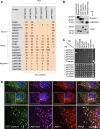
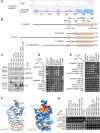
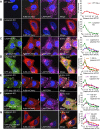
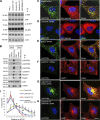

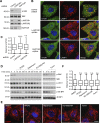
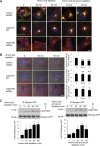
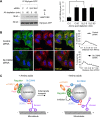
Comment in
-
Ragulator-a multifaceted regulator of lysosomal signaling and trafficking.J Cell Biol. 2017 Dec 4;216(12):3895-3898. doi: 10.1083/jcb.201710039. Epub 2017 Nov 14. J Cell Biol. 2017. PMID: 29138253 Free PMC article.
Similar articles
-
LAMTOR/Ragulator is a negative regulator of Arl8b- and BORC-dependent late endosomal positioning.J Cell Biol. 2017 Dec 4;216(12):4199-4215. doi: 10.1083/jcb.201703061. Epub 2017 Oct 9. J Cell Biol. 2017. PMID: 28993467 Free PMC article.
-
Disruption of the Rag-Ragulator Complex by c17orf59 Inhibits mTORC1.Cell Rep. 2015 Sep 1;12(9):1445-55. doi: 10.1016/j.celrep.2015.07.052. Epub 2015 Aug 20. Cell Rep. 2015. PMID: 26299971 Free PMC article.
-
BORC, a multisubunit complex that regulates lysosome positioning.Dev Cell. 2015 Apr 20;33(2):176-88. doi: 10.1016/j.devcel.2015.02.011. Dev Cell. 2015. PMID: 25898167 Free PMC article.
-
Amino acids and mTORC1: from lysosomes to disease.Trends Mol Med. 2012 Sep;18(9):524-33. doi: 10.1016/j.molmed.2012.05.007. Epub 2012 Jun 28. Trends Mol Med. 2012. PMID: 22749019 Free PMC article. Review.
-
Regulation of mTORC1 by amino acids.Trends Cell Biol. 2014 Jul;24(7):400-6. doi: 10.1016/j.tcb.2014.03.003. Epub 2014 Mar 31. Trends Cell Biol. 2014. PMID: 24698685 Free PMC article. Review.
Cited by
-
ER as master regulator of membrane trafficking and organelle function.J Cell Biol. 2022 Oct 3;221(10):e202205135. doi: 10.1083/jcb.202205135. Epub 2022 Sep 15. J Cell Biol. 2022. PMID: 36108241 Free PMC article. Review.
-
Secretion of misfolded cytosolic proteins from mammalian cells is independent of chaperone-mediated autophagy.J Biol Chem. 2018 Sep 14;293(37):14359-14370. doi: 10.1074/jbc.RA118.003660. Epub 2018 Aug 2. J Biol Chem. 2018. PMID: 30072379 Free PMC article.
-
Mechanisms of lysosomal positioning and movement.Traffic. 2018 Oct;19(10):761-769. doi: 10.1111/tra.12587. Epub 2018 Jul 17. Traffic. 2018. PMID: 29900632 Free PMC article. Review.
-
Lipid-mediated motor-adaptor sequestration impairs axonal lysosome delivery leading to autophagic stress and dystrophy in Niemann-Pick type C.Dev Cell. 2021 May 17;56(10):1452-1468.e8. doi: 10.1016/j.devcel.2021.03.032. Epub 2021 Apr 19. Dev Cell. 2021. PMID: 33878344 Free PMC article.
-
Phosphofructokinases Axis Controls Glucose-Dependent mTORC1 Activation Driven by E2F1.iScience. 2019 Oct 25;20:434-448. doi: 10.1016/j.isci.2019.09.040. Epub 2019 Oct 1. iScience. 2019. PMID: 31627130 Free PMC article.
References
MeSH terms
Substances
Associated data
- Actions
Grants and funding
LinkOut - more resources
Full Text Sources
Other Literature Sources
Research Materials
Miscellaneous

